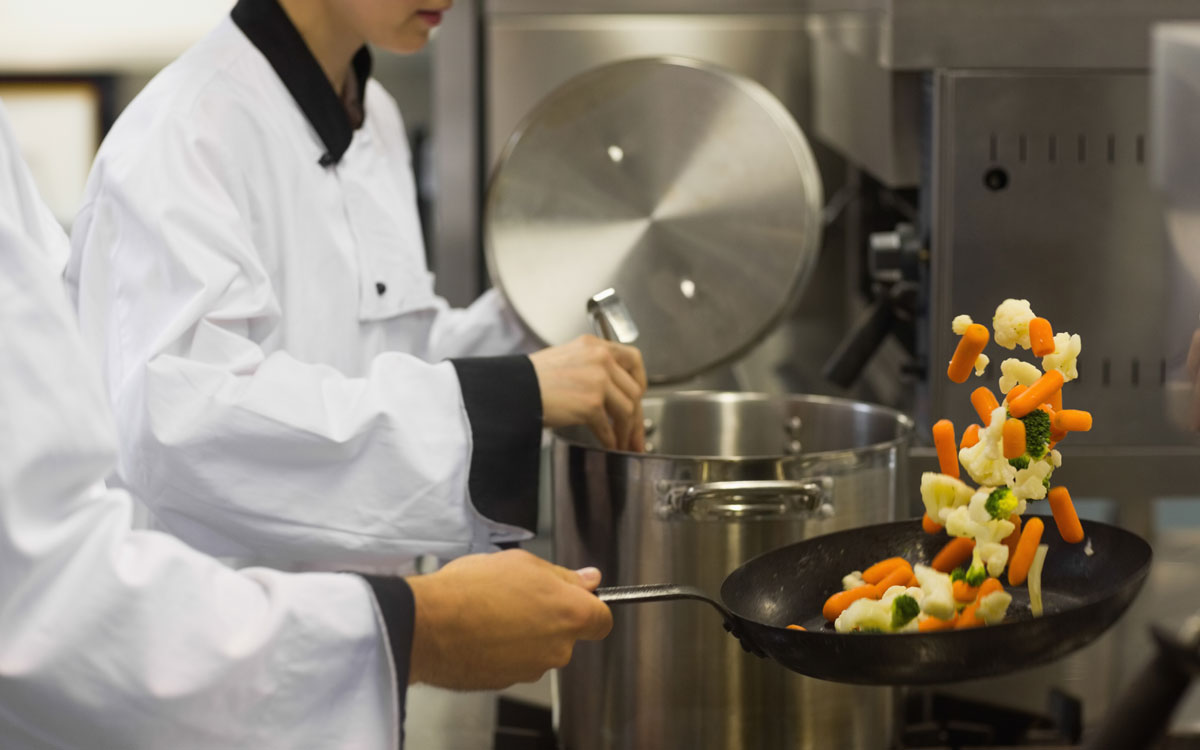





Your staff are the bread and butter of your business. They’re the ones interacting with your customers day after day, ensuring great dining experiences at your restaurant. So, it’s important to make sure they’re properly trained and set up for success. One way to ensure this is through the right training program. Here, we break down several things that you need to teach your restaurant staff so your employees feel ready to tackle anything that comes their way.
When it comes to training your staff, there are typically three methods that you can choose from: shadowing and demonstrating, instructing and supervising, and role-playing. For the shadowing method, a new employee follows an experienced employee, watching their actions and eventually following their lead with tables of their own, as the experienced employees monitors. This method allows a new employee to learn where things are, and the best ways to interact with guests. Instructing and supervising allows the employee to try and figure things out independently, then learn from any mistakes they made. If you want your new hires to experience what might happen in a real-life situation, it’s wise to incorporate role-playing into your training program. This involves trainers acting out the role of a customer to test new staff members on what they’ve learned, such as menu items or how to answer questions.
While you’re teaching employees the ins and outs of the restaurant, it’s important to also train them on how to handle customer complaints. Your employee will eventually come across a customer who isn’t happy about their meal, and they need to know how to respond.
Ideally, kitchen and wait staff need to be able to recite your menu in their sleep. This includes the ingredients in every dish (especially if your menu is on the smaller side). Your customers are going to ask questions about different items, and your staff should know the answers. Your kitchen staff should be able to quickly learn your menu because they’re the ones creating your dishes. You can train your employees with a visual PowerPoint presentation that uses pictures to outline your dishes, daily and weekly tastings where employees can sample different menu items, or give them time to memorize the menu before giving them a written test.
From espresso makers and programmable fryers to combination ovens and high-tech video order systems, it’s important for your managers and staff to know how to work every piece of equipment in your restaurant. This includes how to clean equipment and perform routine maintenance. Shadowing and demonstration would work best here, so staff can see exactly how you’re operating every single piece of equipment. Training should include instructions on how to turn off the equipment when it’s not in use—that will help you save on electricity and general wear and tear of kitchen equipment. Managers should also be aware of the location of breaker panels, quick disconnects, gas shutoff valves and grease traps.
Like any workplace, restaurants should have a program in place to address internal employee conflicts. Not only do you need to train your managers on how to combat employee altercations, but you need to teach employees on the best ways to handle a situation if a conflict does arise. Employee arguments should always be handled somewhere private. Train your manager to take employees in a backroom if a conflict arises, to dispel it as quickly and peacefully as possible. If a customer witnesses an argument between two of your employees, remember to apologize to the customer. Finally, have the manager follow up with the two employees who engaged in conflict and touch base with them to make sure the issue is resolved and figure out a solution to avoid future conflicts.
Who doesn’t enjoy a little friendly competition? Training shouldn’t stop when your employees have learned the ins and outs of their job and how everything works in your kitchen. One way to push them to continually learn and improve in the restaurant industry is to create some opportunities for competition. For example, Danny Meyer, founder of Shake Shack, created the Barista Olympics for his employees which allowed them to improve their coffee services. Create your own small competition and offer prizes to employees who win, like an extra day off work.
Holly Edwards is Gather‘s content marketing specialist. She works on blog posts, social media content and thought leadership pieces that help restaurants and other venues streamline their planning process and host successful events.










